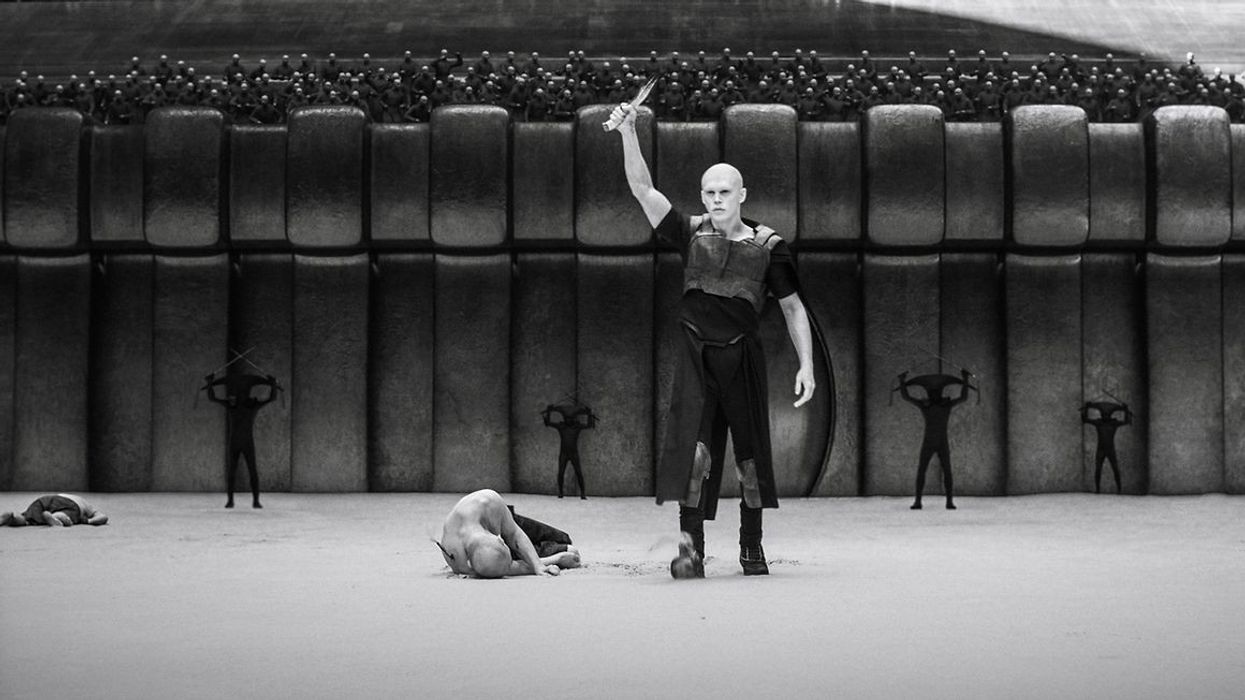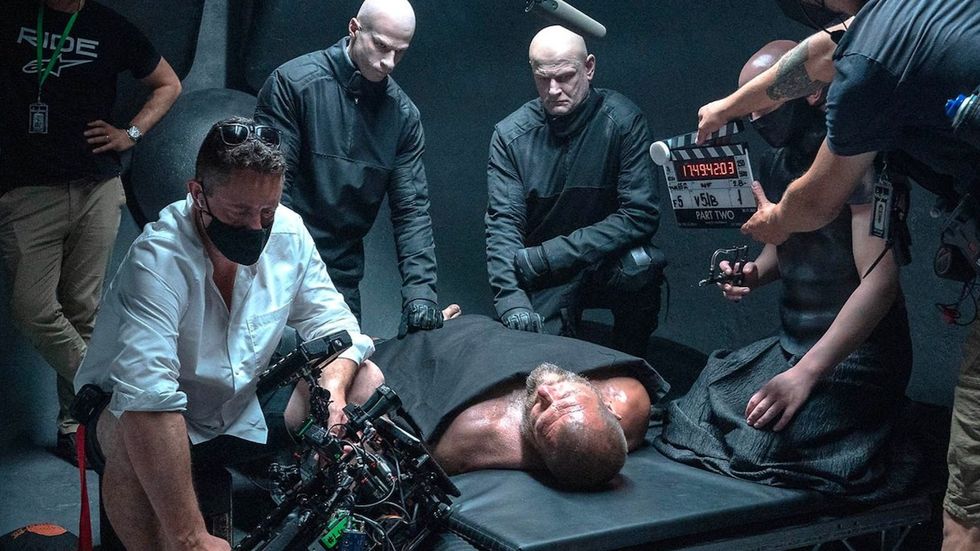How Greig Fraser Was Able to Shoot in Infrared for 'Dune: Part Two'
Here’s how DP Greig Fraser was able to shoot those Geidi Prime sequences in Dune: Part Two.

Dune: Part Two Infrared
If you've seen Dune: Part Two (or at least heard about this through the film’s non-stop media blitz over the past few weeks), there’s one section of the film that seems to stand out more than the rest. No, it’s not Christopher Walken’s performance as Shaddam IV, the Padishah Emperor, but rather it’s a very awesome sequence that takes place on the Harkonnen planet of Giedi Prime.
While I’m not a Dune scholar (please find those on YouTube, because they are fascinating), we do learn in the film that Geidi Prime is draped under a black sun, which is why director Denis Villeneuve and cinematographer Greig Fraser chose to shoot the film in black-and-white.
Well, kind of. The story behind it is even more interesting as Fraser and Villeneuve revealed that they shot the sequence in infrared. Here’s how it went down.
The Cameras 'Behind Dune: Part Two'
As we cover in a more thorough article, Dune: Part Two was shot with ALEXA 65 and the ALEXA Mini LF cameras. We get our info from a recent interview with ARRI Rental where Greig Fraser goes quite in-depth into what cameras and lenses he used for the film and what looks he was trying to achieve with the project.
In particular, Fraser also shares some interesting insights into how he was able to shoot the black-and-white scenes with infrared cinematography, something he had been experimenting with ever since trying it out in Zero Dark Thirty a decade earlier.

Greig Fraser on set of Dune: Part Two
Copyright © 2022 Warner Bros. Pictures, Inc.
Recreating the Geidi Prime Black Sun
For the Geidi Prime sequences, Fraser shares how he and Villeneuve approached creating the other-worldly feel of the planet which serves as a de facto home base for the main villains for this portrayal of Dune: Part Two.
“We'd been on this planet for night interiors in part one, but we'd never been outside, so we were discussing what it would look like. I did a test for Denis where the inhabitants have very pale white skin, based on the notion that there's no visible light from the sun on Giedi Prime, only infrared light. When the characters go from inside to outside, they effectively go from normal light to infrared light." — Greig Fraser talking with ARRI Rental.
They had shot some interiors set on Geidi Prime in Dune: Part One, so they mostly kept those sequences the same. However, for the exteriors, which the audience would be seeing for the first time (and including a longer colosseum fight sequence as well) Fraser and Villeneuve decided to try something new.
Shooting Infrared in Black and White
After tests, the duo discovered that infrared images worked best in black and white and that was the aesthetic choice that they made for all of the Geidi Prime exteriors in the film. ARRI Rentals shares that while ARRI does carry a limited number of native black-and-white ALEXA Monochrome cameras, they weren’t available for the production, so Fraser and Villeneueve were left to simply remove the IR filters from their regular ALEXA cameras for those scenes.
Fraser also added a filter in front of the lens to block almost all visible light from the sensor and further saturate the colors to monochrome to help with the on-set monitoring and later in post-production as well.
Fraser goes on to further share that he had used some of the same modified ALEXA 65 models on Rogue One as part of their VFX camera use as he discovered that lighting parts of the set with IR lights didn’t affect the main image. What’s cool about this process is that the cameras would only record the infrared that bounced off of skin and clothes in the shots, so the colors were rendered as tones quite different from what you might usually expect.
- The Specific Choices That Make Hoyte Van Hoytema Great ›
- What the Cameras and Cinematography of 'Nope' Can Teach You About Filmmaking ›
- Lomography's New 'Purple' Color Negative 35mm Film Stock, Inspired by Kodak's Infrared Aerochrome ›
- James Cameron Has Reinvented Underwater Cinematography... Again ›
- How DP Hoyte Van Hoytema Reinvented Day-for-Night in 'Nope' ›
- Take a Look at the Avid Timeline From Dune: Part 2 ›











